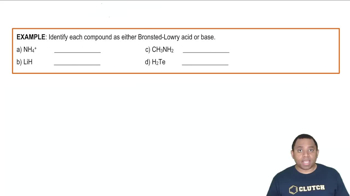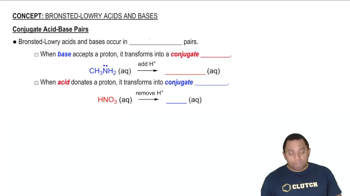Textbook Question
Identify the weakest acid in each of the following sets. Explain your reasoning. (c) B(OH)3, Al(OH)3, Ga(OH)3
 Verified step by step guidance
Verified step by step guidance



Identify the weakest acid in each of the following sets. Explain your reasoning. (c) B(OH)3, Al(OH)3, Ga(OH)3
Identify the stronger base in each of the following pairs.
Explain your reasoning.
(a) ClO2- or ClO3-
(b) HSO4- or HSeO4-
Identify the stronger base in each of the following pairs.
Explain your reasoning.
(d) HS- or Br-
Calculate the H3O+ concentration to the correct number of significant figures for solutions with the following pH values. (d) 14.25